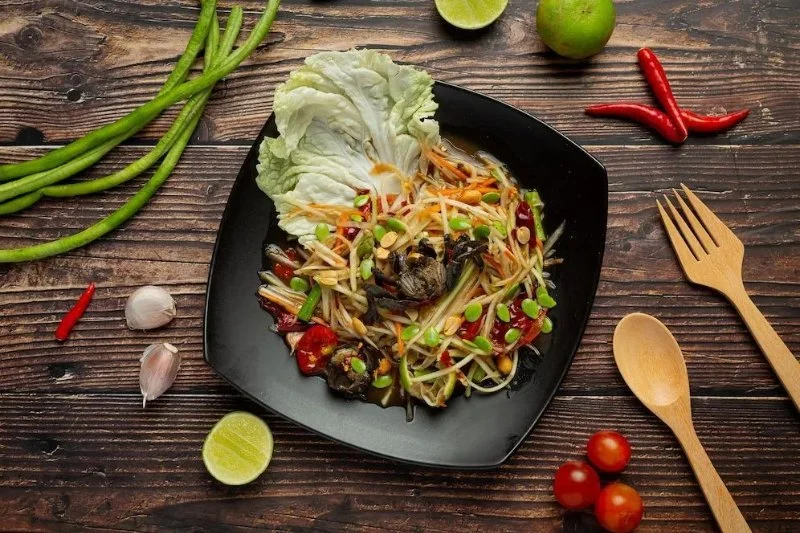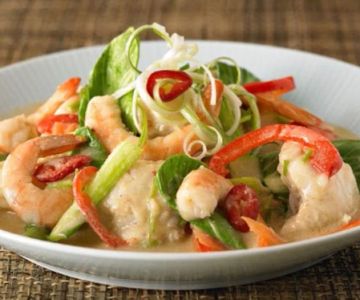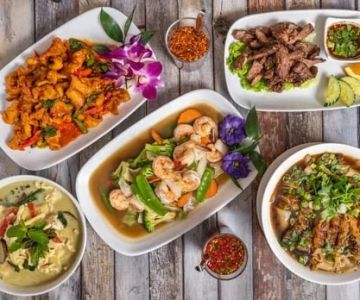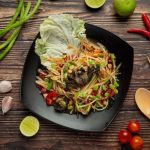
- How to Make Thai Food That’s Balanced for a Healthy Lifestyle
- Understanding Thai Cuisine and Its Healthy Foundations
- Key Elements of Balanced Thai Meals
- Tips to Cook Healthier Thai Dishes at Home
- Real-Life Story: How a Thai Chef Balanced Flavor and Health
- Choosing Healthy Thai Ingredients
- Bringing Authenticity to Your Thai Cooking
- Why Balanced Thai Food Matters for Modern Lifestyles
How to Make Thai Food That’s Balanced for a Healthy Lifestyle
Thai cuisine is known for its explosion of flavors — a perfect blend of sweet, sour, salty, and spicy. But beyond its taste, Thai food can also be one of the healthiest diets when prepared thoughtfully. This article explores how to make Thai food that’s balanced for a healthy lifestyle, focusing on practical tips, nutritional insights, and real-life examples from Thai culture.

Thai by Thai
NorwichSoutheastern Connecticut Planning RegionConnecticut
631 N Main St, Norwich, CT 06360, USA
Understanding Thai Cuisine and Its Healthy Foundations
Traditional Thai food is naturally balanced. It uses plenty of vegetables, lean proteins, and herbs that offer both taste and nutrition. For example, dishes like Tom Yum Soup and Som Tum (Papaya Salad) are low in calories but high in nutrients and antioxidants. The Thai philosophy of eating revolves around balance — in flavor, portion, and nutrition — which aligns perfectly with a modern healthy lifestyle.
In Thailand, meals are often served family-style, encouraging portion control and variety. By sharing different dishes, you naturally consume smaller portions of each, which supports a balanced diet.

The Boss Restaurant (Wakefield)
South KingstownWashington CountyRhode Island
682 Kingstown Rd, Wakefield, RI 02879, USA
Key Elements of Balanced Thai Meals
1. Protein Variety: Thai meals often combine different sources of protein such as chicken, tofu, or shrimp. These provide essential amino acids while keeping meals light.
2. Fresh Herbs and Spices: Ingredients like lemongrass, basil, galangal, and kaffir lime are not only aromatic but also have anti-inflammatory and immune-boosting properties.
3. Complex Carbohydrates: Instead of refined white rice, try brown rice or jasmine rice mixed with quinoa for added fiber and nutrients.
4. Healthy Fats: Use coconut milk in moderation or replace it with light coconut cream to reduce saturated fat while maintaining the creamy Thai texture.
Tips to Cook Healthier Thai Dishes at Home
Cooking Thai food at home allows you to control your ingredients and reduce excess sugar, sodium, and oil. Here are a few simple yet effective strategies:
1. Use grilling or steaming instead of deep frying. For instance, grill your satay instead of frying it.
2. Replace fish sauce with a lower-sodium soy or tamari sauce if you’re watching your salt intake.
3. Add more vegetables than meat to your stir-fry dishes to increase fiber and reduce calories.
4. Choose light coconut milk for curries or blend it with vegetable broth to cut calories while keeping flavor.
For authentic ingredients, you can always visit Thai Food to find high-quality sauces, herbs, and spices perfect for healthy Thai cooking.
Real-Life Story: How a Thai Chef Balanced Flavor and Health
Chef Naree, a Thai-American restaurateur in Los Angeles, once struggled to adapt her traditional recipes for health-conscious customers. Instead of compromising taste, she innovated — swapping coconut cream with a blend of light coconut milk and almond milk. She reduced sugar in her famous Pad Thai by using tamarind and fresh lime for natural sweetness. Her dishes became not only healthier but also gained more loyal customers who appreciated the authentic yet balanced flavors.
Her story reminds us that eating healthy doesn’t mean giving up flavor — it’s about mindful cooking and creativity.
Choosing Healthy Thai Ingredients
The heart of balanced Thai food lies in ingredient selection. Choose fresh herbs over dried, and prioritize whole foods. Here are some recommended swaps:
1. Rice noodles → Try zucchini noodles or brown rice noodles for extra fiber.
2. Coconut milk → Use half coconut milk, half vegetable broth for a lighter version.
3. Palm sugar → Replace with a touch of honey or stevia to cut down refined sugar.
4. Fried toppings → Swap with roasted peanuts or sesame seeds for crunch without the oil.
All these items can be found on Thai Food, where you can explore healthy Thai ingredients tailored for the U.S. market.
Bringing Authenticity to Your Thai Cooking
Authenticity doesn’t mean complexity. Many people believe cooking Thai dishes at home is hard, but it’s all about understanding the right balance. Use fresh lime juice, fish sauce, and herbs to achieve authentic flavors without heavy additives. Even simple dishes like Thai basil chicken or green curry can be both authentic and healthy with a few mindful adjustments.
Why Balanced Thai Food Matters for Modern Lifestyles
Today’s fast-paced life often leads to quick, processed meals, but Thai food provides a delicious alternative. With its focus on freshness, balance, and natural ingredients, it fits perfectly into a wellness-focused lifestyle. Whether you’re meal prepping for the week or dining out, incorporating Thai-inspired balance helps you stay healthy without sacrificing satisfaction.
For more inspiration, check out Thai Food where you can find authentic ingredients, cooking tools, and recipes to elevate your healthy Thai cooking experience.







 Lemongrass Restaurant & Sake Bar4.0 (323 reviews)
Lemongrass Restaurant & Sake Bar4.0 (323 reviews) Dagg Thai Restaurant4.0 (1853 reviews)
Dagg Thai Restaurant4.0 (1853 reviews) Siam Deluxe4.0 (135 reviews)
Siam Deluxe4.0 (135 reviews) Chalong Southern Thai4.0 (3281 reviews)
Chalong Southern Thai4.0 (3281 reviews) Little Thai Kitchen4.0 (421 reviews)
Little Thai Kitchen4.0 (421 reviews) Udom Thai4.0 (636 reviews)
Udom Thai4.0 (636 reviews) Thai Food Ingredient Spotlight: Kaffir Lime Leaves & Their Unique Aroma
Thai Food Ingredient Spotlight: Kaffir Lime Leaves & Their Unique Aroma How to Make Thai Food That’s Great for Meal Prepping
How to Make Thai Food That’s Great for Meal Prepping Best Thai Meat Recipes for Meat Lovers Seeking Something New
Best Thai Meat Recipes for Meat Lovers Seeking Something New Thai Food for Apartment Living: Simple, Flavorful & Budget-Friendly
Thai Food for Apartment Living: Simple, Flavorful & Budget-Friendly The Best Thai Food Recipes for Couples Cooking Together
The Best Thai Food Recipes for Couples Cooking Together How to Make Thai Food That’s Balanced for a Healthy Lifestyle
How to Make Thai Food That’s Balanced for a Healthy Lifestyle